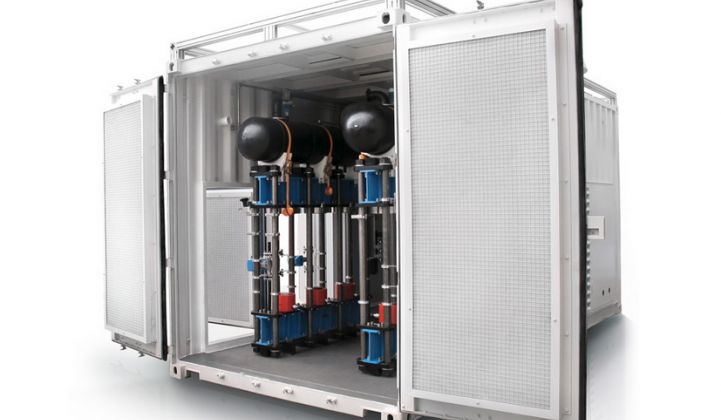ITM Power, a British power-to-gas storage company, appears to be mounting a charm offensive to win back investor confidence after issuing a profit warning last month.
The company put out an upbeat report on progress with German customer Thüga Group less than two weeks after posting a £3.7 million ($5.7 million) half-year pre-tax loss.
Thüga’s polymer electrolyte membrane power-to-gas plant was operating at an overall efficiency of more than 70 percent, ITM Power said. A press release quoted Thüga Aktiengesellschaft chief executive Michael Riechel as saying it had “exceeded expectations.”
The tone of the announcement contrasted the half-year results issued January 30.
“Trading has been slower than anticipated, meaning results for the full year will be substantially lower than market expectations,” said the company in a press release.
Total revenues and grant funding came to £1.34 million ($2.06 million) for the six months to October 31, 2014, compared to £1.61 million ($2.47 million) for the same period in 2013.
Revenue dropped to £520,000 ($799,000) versus £710,000 ($1.09 million) in 2013, while grant income fell to £820,000 ($1.26 million) from £900,000 ($1.38 million) over the same period the year before.
The level of fixed assets had risen slightly, to £1.51 million ($2.32 million) from £1.42 million ($2.18 million) a year before.
And cash burn stood at £3.09 million ($4.75 million) per six months, against a balance of £6.67 million ($10.26 million).
“Whilst trading has been more difficult than anticipated, this has still been a very productive period for us,” said Graham Cooley, ITM Power’s chief executive, in a press statement. “ITM Power has now identified and optimized its key products, deployed reference plant in its key markets, and is now selling large-scale plant to major international companies.”
Charles Purkess, ITM Power’s marketing and PR manager, would not comment on financial matters, but said: “Nothing has changed in terms of the market and what we are doing."
The feedback from the Thüga project had helped ITM Power sell a second power-to-gas plant to the German utility RWE Deutschland, he said. ITM Power requires 50 percent of payment upfront on all projects it bids on.
It is currently targeting both the utility sector, with Thüga, RWE, and the U.K. National Grid as major customers, and transportation, where it offers a self-contained hydrogen refueling module called HFuel.
In its half-yearly results presentation, the company listed three operational hydrogen refueling stations, all in the U.K. A further unit has been commissioned in Britain and five more are being built, three in London and two in California.
Purkess said hydrogen fuel-cell vehicles represent “a massive emerging global market.”
All major car manufacturers are working on hydrogen fuel-cell models, he said, and the technology offered a number of advantages over batteries, such as a refueling time of “three minutes.”
Regarding the utility market opportunity, he pointed to Thüga’s prediction of a need for 17 terawatt-hours of storage by 2020, rising to up to 50 terawatt-hours in 2050.
It remains to be seen whether ITM Power, which raised £10 million ($18.6 million) when it floated on London’s Alternative Investment Market in 2004, will be able to hang in there long enough to capitalize on this growing appetite for hydrogen.
For now, at least, the company’s reassurances appear to have soothed investor nerves. Shares in the company, which hit a two-month low of £22.50 ($34.60) per share after the profit warning, were heading north of £30 ($46) within 10 days.
Not everyone is convinced, however. One utility source pointed out that power-to-gas demonstration projects have had difficulties pulling in funding.
“The regulator did not agree to fund,” said the source. “I think the sheer number of stakeholders and cross-industry interaction makes it a very difficult play.”
Another industry insider said: “[There is] a strong case, I believe, for adapting the cheap internal combustion engine for hydrogen, though less so for fuel cells, since these have been an investment black hole since the fuel cell came into existence not far off 150 years ago.”



